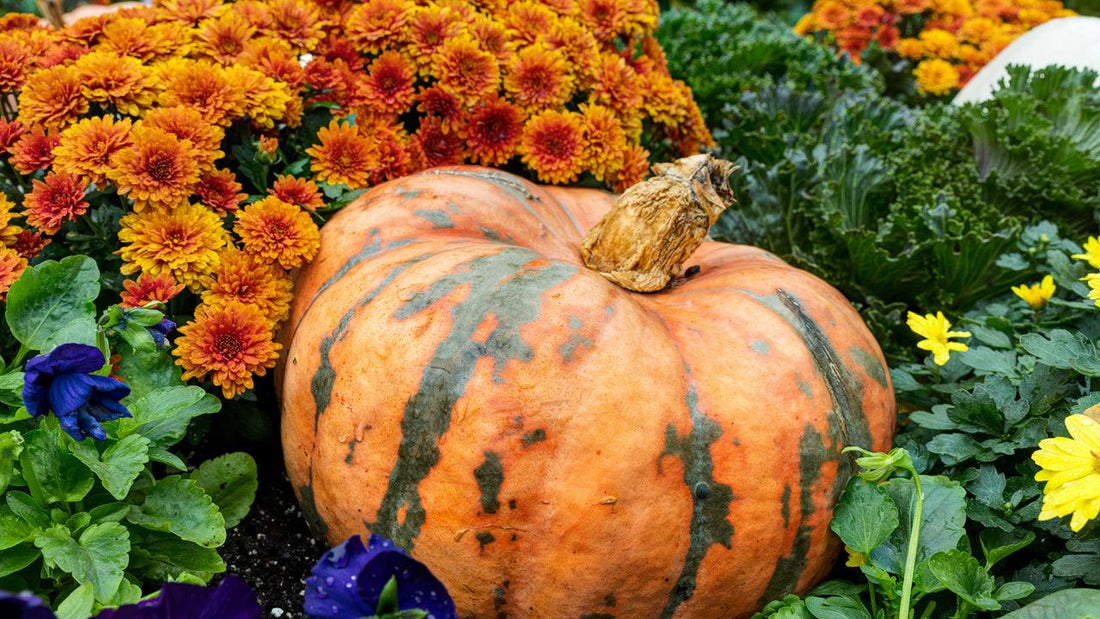November is still a very active time in the garden. Time for putting plants to bed for the winter and time for planning out next season's garden. Read more on all the things to do during November in your garden.
- Time to Put Your Rhubarb and Asparagus to "Bed" for the Winter – Prune out any dead stems and cover your beds with a thick layer of compost or straw.
- Remove Dead Plants from your Warm Season Vegetable Garden and Plant Some Cool Season Veggies. If growing vegetables over the winter put up a cold frame or low tunnel to extend your season. You can plant veggies like kale, lettuce, radish, turnips, greens, peas and grow these throughout the winter if you have a low tunnel or greenhouse.
- Get your Garlic or Shallots In the Ground – Plant your garlic before the first freeze and mulch with straw to protect the cloves over the winter. The colder your winter, the thicker the layer of mulch you should apply.
- Plant some Native Plants – Fall and winter rains helps natives develop good deep root systems before having to endure a summer of little or no rain (in the West).
- Take Cuttings from Your Summer Herb Garden – Summer herbs like tarragon, oregano, marjoram, or basil, will not last through the winter, so take cuttings and dry them out to use in dishes through the winter.
- Pick your Green Tomatoes – Before your first frost pick your unripe tomatoes and ripen indoors. All green tomatoes might not ripen, so make some fried green tomatoes!
- Protect your Perennial Veggies – Add a layer of compost and mulch to your asparagus beds, artichokes, rhubarb, horseradish or Jerusalem artichokes.
- Plant Spring-Flowering Bulbs – Plant your spring-flowering bulbs like daffodils, tulips, crocus, freesias, iris, hyacinth, peonies or lilies. Plant them in pots or directly into the ground.
- Plant Cover Crops in Empty Garden Spots – Plant a soil building cover crop like our Soil Builder mixes to add nitrogen and organic matter to the soil as well as providing weed competition and erosion control. If your soil temp has dropped below 45F, then it would be best to wait until spring to plant.
- Take Care of Your Irrigation System – Drain your irrigation system and shut off your water for the season.
- After Leafdrop Spray Your Peaches and Nectarines for Peach Leaf Curl –Dormant oil spays can also be applied at this time to control some overwintering pests such as scale. This is the first application during the dormant season. It is recommended to spray for peach leaf curl again in early January and the final application prior to bud break, around mid-February.
- Add Cool Season Flowers – Plant some cool season flowers like calendula, pansies, violas, snapdragons, mums, or sweet peas if your weather permits.
- Erosion Control – Plant erosion control cover crops and pair with some jute netting if your slope is very severe. This will help prevent the seeds from washing down the hill.
- Protect Frost Sensitive Plants – Cover with frost blankets or bring them indoors for the winter if freezing temperatures on on the horizon.
- Continue Planting Cool Season Veggie Transplants – make sure to have row covers for frost protection if the temps will drop below freezing. You can also plant under a low tunnel that is set up with greenhouse plastic to act like a mini greenhouse.
- Clean and oil your garden tools and store away for winter.
- Clean up the Orchard – pick up any dropped fruit and remove any fruit left on the trees. Do not put any fruit in the compost pile that may be infected with disease or contain pests such as codling moth larvae.
- If Planning on Planting New Fruit Trees Make Some Preparations – pre- dig your holes or set up an area in a shed, greenhouse or garage to heel in any bare root trees or plants.
Year-Round Gardening Resources
Browse our monthly gardening checklists and seasonal tips to keep your garden thriving all year long:
- Winter Garden Checklist
- December & January Gardening Checklist
- October Gardening Tips
- September Gardening Checklist
- August Gardening Checklist
- July Gardening Checklist
- June Gardening Checklist
- May Gardening Checklist
- April Gardening Checklist
- March Gardening Checklist
- February Gardening Checklist
Need supplies for your garden? Explore our wide selection of Fertilizers & Growing Supplies to support healthy plants and bountiful harvests.

